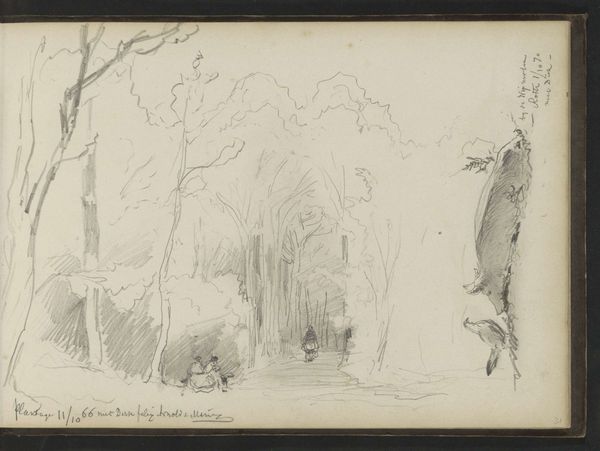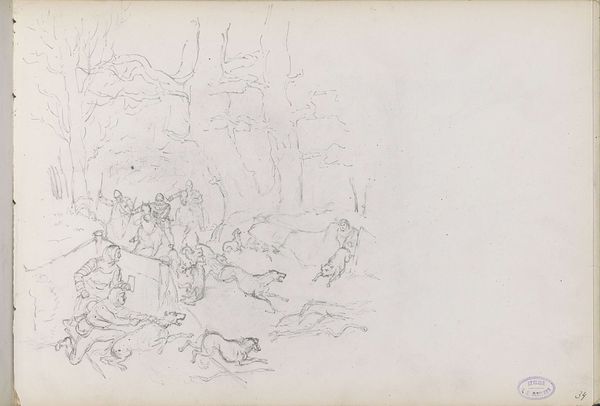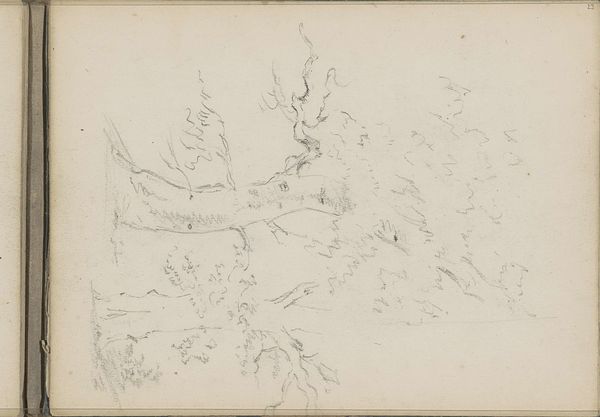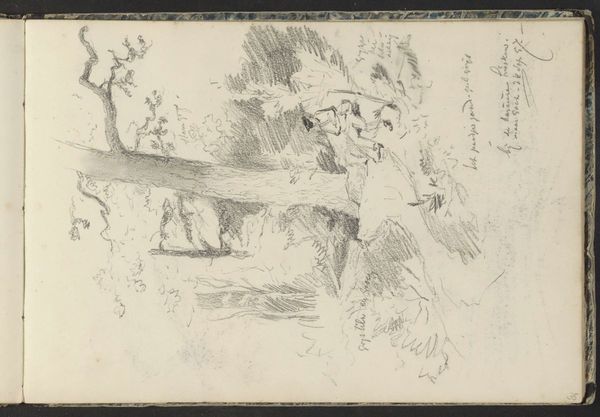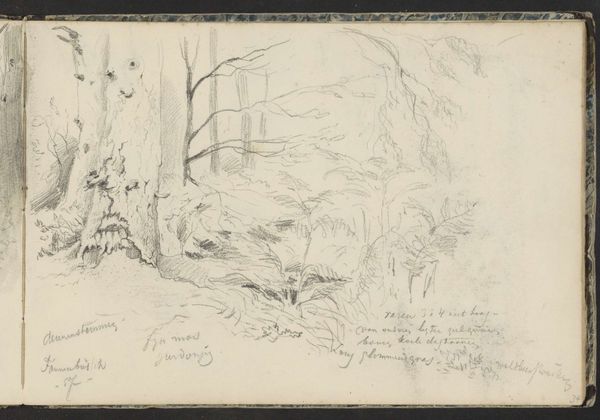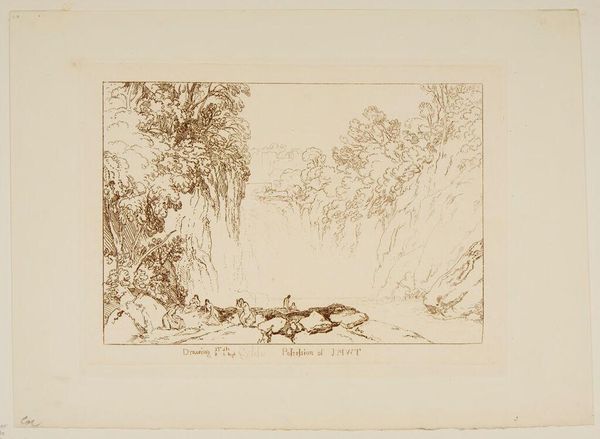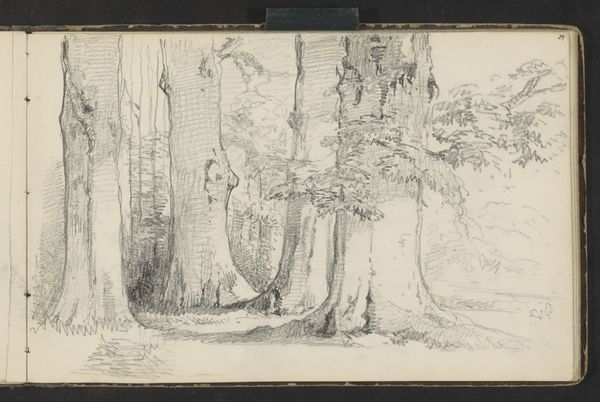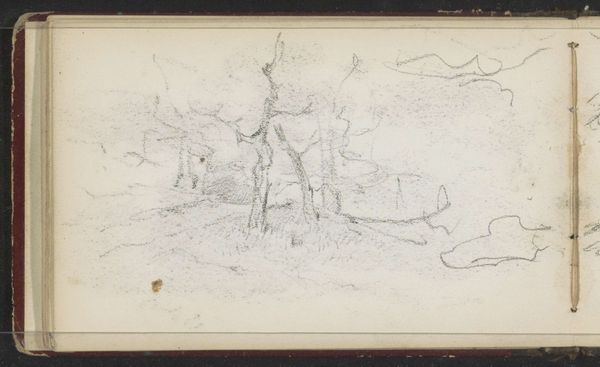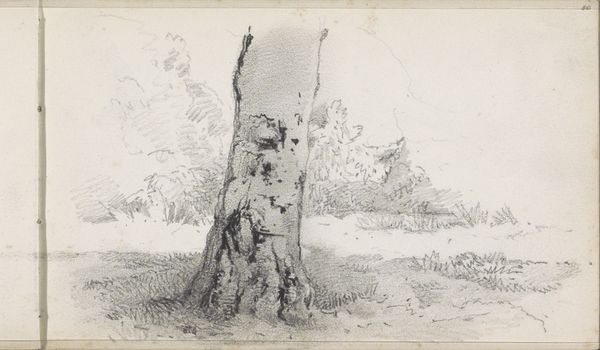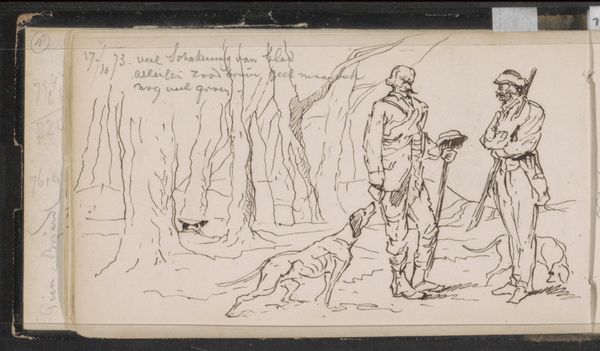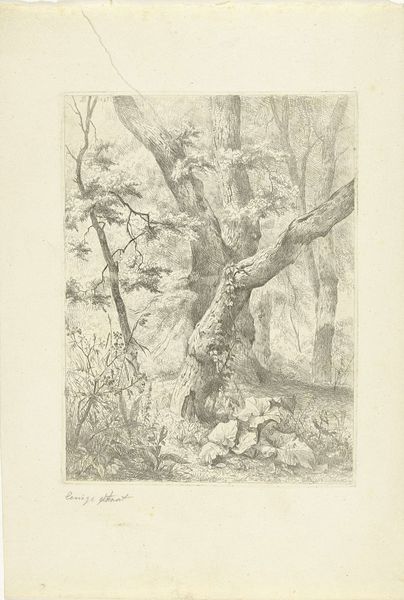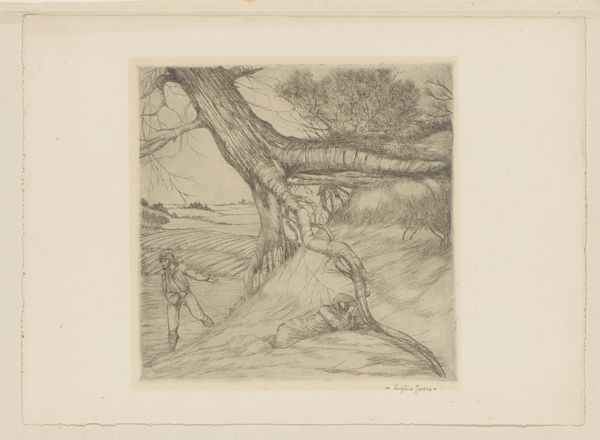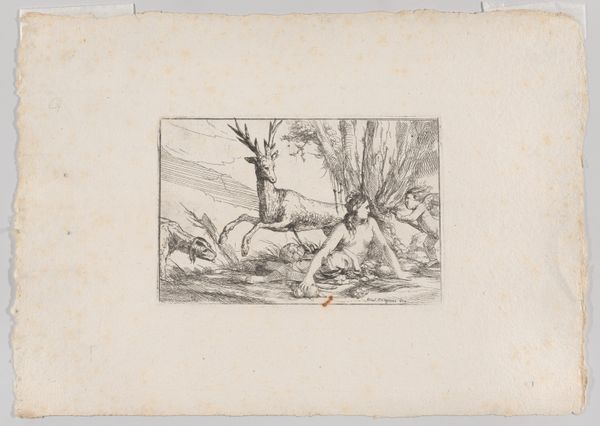
Zoon Henri zittend op de stam van een boom in Niederwald 1861 - 1869
0:00
0:00
johannestavenraat
Rijksmuseum
drawing, pencil
#
drawing
#
imaginative character sketch
#
quirky sketch
#
pen sketch
#
incomplete sketchy
#
landscape
#
figuration
#
personal sketchbook
#
forest
#
ink drawing experimentation
#
pen-ink sketch
#
pencil
#
sketchbook drawing
#
academic-art
#
sketchbook art
#
realism
#
initial sketch
Copyright: Rijks Museum: Open Domain
Editor: Here we have Johannes Tavenraat’s pencil drawing, "Zoon Henri zittend op de stam van een boom in Niederwald," made between 1861 and 1869. It shows a young boy perched on a tree branch within a forest setting. What really catches my eye is the sketched, almost unfinished quality of the whole scene. What’s your take on this drawing? Curator: It is interesting how Tavenraat uses readily available materials, like pencil and paper, to capture not only the boy, but also his environment. Consider the availability and affordability of these materials in the 19th century and what the landscape represented during the industrial revolution. Editor: That's a good point, especially thinking about how readily available these materials would have been. Does the medium, a simple drawing, influence how we should understand the work? Curator: Absolutely. It invites us to think about the role of drawing itself as a practice. Is it merely a preliminary sketch, or can it stand as a completed work? Was Tavenraat focusing on observation and documentation, perhaps for a later, grander project? This process itself gives meaning, revealing his exploration of form, light, and shadow within this scene. Consider also, how the consumption of materials influenced artistic choices. Editor: So, by looking at the 'how' of the drawing—the materials and the process—we can gain a deeper understanding of the work itself. It seems this "unfinished" quality provides us more to consider! Curator: Precisely. It's in this understanding of labor and materiality that we appreciate the deeper context surrounding the work. Editor: I hadn’t considered it that way, I now appreciate how the raw materials tell us just as much of a story as the image portrayed! Curator: Indeed. And that expanded view helps us move beyond purely aesthetic considerations.
Comments
No comments
Be the first to comment and join the conversation on the ultimate creative platform.
